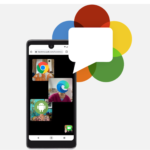This is the next decode and analysis in Philipp Hancke’s Blackbox Exploration series conducted by &yet in collaboration with Google. Please see our previous posts covering WhatsApp, Facebook Messenger and FaceTime for more details on these services and this series. {“editor”: “chad hart“}
Wire is an attempt to reimagine communications for the mobile age. It is a messaging app available for Android, iOS, Mac, and now web that supports audio calls, group messaging and picture sharing. One of it’s often quoted features is the elegant design. As usual, this report will focus on the low level VoIP aspects, and leave the design aspects up for the users to judge.
As part of the series of deconstructions, the full analysis is available for download here, including the wireshark dumps.
Half a year after launching the Wire Android app currently has been downloaded between 100k and 500k times. They also recently launched a web version, powered by WebRTC. Based on this, it seems to be stuck with what Dan York calls the directory dilemma.
What makes Wire more interesting from a technical point of view is that they’re strong proponents of the Opus codec for audio calls. Maybe there is something to learn here…
The wire blog explains some of the problems that they are facing in creating a good audio experience on mobile and wifi networks:
The WiFi and mobile networks we all use are “best effort” — they offer no quality of service guarantees. Devices and apps are all competing for bandwidth. Therefore, real-time communications apps need to be adaptive. Network adaptation means working around parameters such as variable throughput, latency, and variable latency, known as jitter. To do this, we need to measure the variations and adjust to them in as close to real-time as possible.
Given the preference of ISAC over Opus by Facebook Messenger, the question which led to investigating Wire was whether they can show how to successfully use Opus on mobile.
Results
The blog post mentioned above also describes the Wire stack as “a derivate of WebRTC and the IETF standardized Opus codec”. It’s not quite clear what exactly “derivate of WebRTC” means. What we found when looking at Wire was, in comparison to the other apps reviewed, was a more “out of the box” WebRTC app, using the protocols as defined in the standards body.
Comparison with WebRTC
| Feature | WebRTC/RTCWeb Specifications | Wire |
| SDES | MUST NOT offer SDES | does not offer SDES |
| ICE | RFC 5245 | RFC 5245 |
| TURN usage | used as last resort | used as last resort |
| Audio codec | Opus or G.711 | Opus |
| Video codec | H.264 or VP8 | none (yet?) |
Quality of experience
Audio quality did turn out to be top notch, as our unscientific tests on various networks showed.
Testing on simulated 2G and 3G networks showed some adaptivity to the situations there.
Implementation
The STUN implementation turned out to be based on the BSD-licensed libre by creytiv.com, which is compatible with both the Chrome and Firefox implementations of WebRTC. Binary analysis showed that the webrtc.org media engine along with libopus 1.1 is used for the upper layer.
Privacy
Wire is company that prides itself on the user privacy protection that comes from having it’s HQ in Switzerland, yet has it’s signalling and TURN servers in Ireland. They get strong kudos for using DTLS-SRTP. To sum it up, Wire offers a case study in how to fully adopt WebRTC for both Web and native mobile.







Leave a Reply